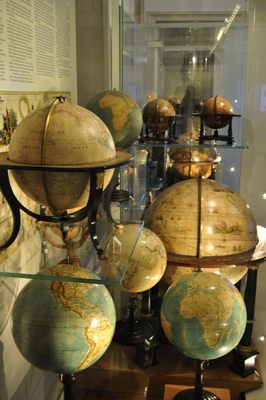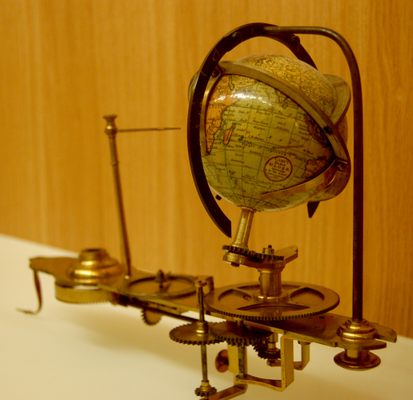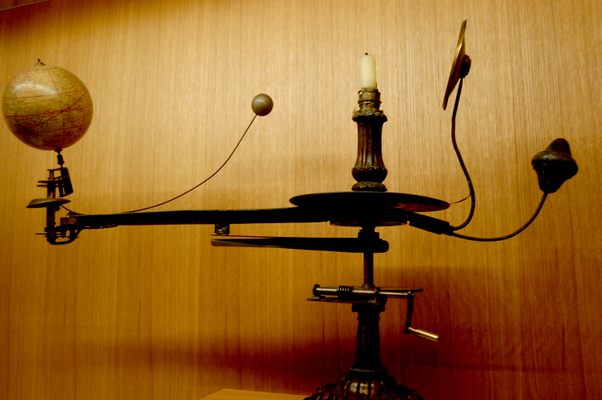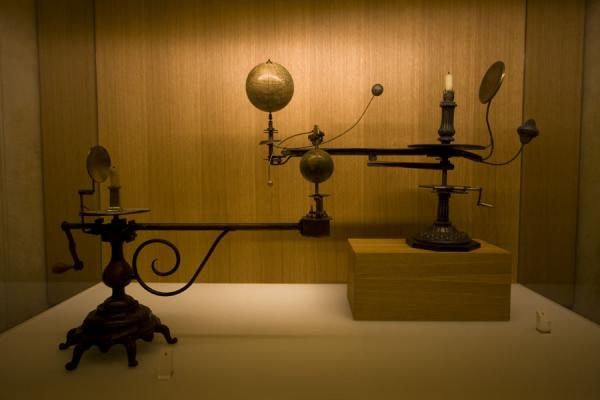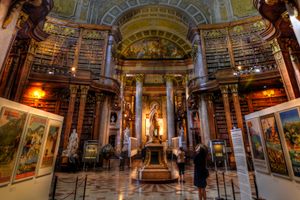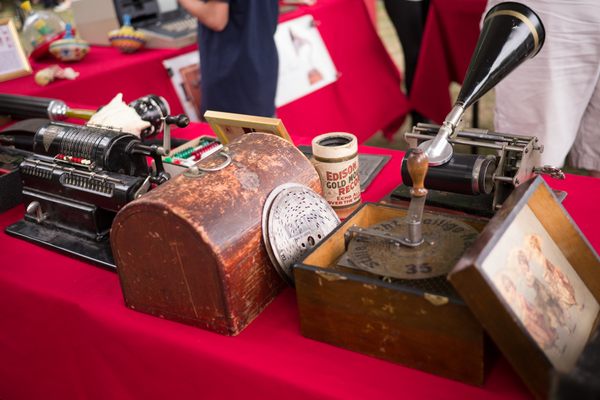About
Until the 19th century, globes often came as a pair—a world globe and a matching celestial globe. One can’t help but observe the admirable craft and beauty that was once devoted to these small representations of our world. To visit the Globe Museum is to step back into a time when all things, including scientific instruments, were made with care and artistry. There is no better way to explore the ways in which man’s understanding of the earth and the heavens has changed over hundreds of years of exploration and study.
The world’s only public museum dedicated solely to globes contains an astonishing collection. (The Maritime Museum in Greenwich, England, also has an extensive globe collection.) There are folding fabric globes (which were inflated with a bellows), giant man-sized globes, and tiny plum-sized globes, each exquisitely made with dark wood, fine lines, and rich colors.
Some of the most interesting items in the museum are the brass tellurions. A tellurion is a mechanical demonstration of the earth's movement about its axes, consisting of a long arm at the end of which is a small rotating globe with a moon spinning around it. At the other end of the arm is a charmingly simple sun: a candle and a brass reflecting disc. With a turn of the crank, the system comes alive. As the earth and moon spin, the tellurion shows seasons, eclipses, tides, precessions of the equinox, and other astronomical phenomena.
Related Tags
Community Contributors
Added By
Published
December 19, 2008

